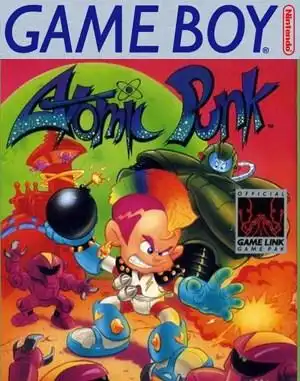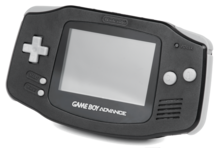Remember the name Atomic Punk? If you're a retro gamer, that name might conjure up images of mazes, bombs, and frantic multiplayer action. But here's a fun twist: depending on your gaming past, the "Atomic Punk" you remember might be a completely different game from the one someone else does!
That's right, this name has a bit of a confusing history, shared by two distinct, yet bomb-centric, classics. Let's detonate this mystery and look at both versions that carried the Atomic Punk moniker.
The Arcade Original: Irem's Atomic Punk
Before it was a handheld hit, Atomic Punk was an arcade cabinet game developed by Irem. This is the one many old-school arcade goers might recall. It laid down a simple, addictive premise: navigate a grid-like maze, strategically place bombs to clear blocks and defeat enemies, and find the exit to the next level.
Gameplay was straightforward but challenging. You controlled a little character, dropped bombs with a timer, and hoped the resulting explosion caught foes without trapping yourself. Destroying certain blocks could reveal power-ups – the lifeblood of any good bomb game! We're talking extra bombs to drop, increased blast radius to cover more ground, faster movement speed to escape your own explosions, and even the coveted remote detonator to set off bombs whenever you pleased.
The Irem Atomic Punk was also notable for its multiplayer options, often supporting 2 or even 4 players simultaneously, leading to chaotic, bomb-filled showdowns that were a staple of arcade competitive fun.
The Game Boy Incarnation: Hudson Soft's Atomic Punk (aka Bomberman)
Fast forward a bit to 1990, and Hudson Soft released a game for the Nintendo Game Boy also titled Atomic Punk. If you're in Japan, you know it as Bomber Boy, and in Europe, it was Dynablaster. Yes, this is actually the first Bomberman game released on the Game Boy!
While sharing the bomb-dropping core mechanic, the Game Boy Atomic Punk offered a different structure and set of modes compared to the arcade version. It wasn't just a straight port.
- Game A: This mode felt more like a traditional adventure, introducing a world map and a progression system. You could even collect "GP" (Game Points?) to purchase power-ups between levels, adding a strategic layer.
- Game B: Closer to the classic Bomberman formula, this mode featured square stages where the screen stayed centered on your character, offering a more focused, arena-like experience.
- Vs. Mode: The multiplayer was a huge draw here, too, offering different rulesets like "Panel Mode" (collecting panels to gain advantages) and "Powerful Mode" (starting with more power but no panels).
This version was praised for being highly addictive and included a password system, which was a godsend for a portable game back then, letting you continue your explosive journey later.
Two Names, One Explosive Spirit
So, why the shared name? It seems to have been a localization choice that caused a bit of confusion across regions and platforms. While the Irem arcade game was a standalone title, the Hudson Soft Game Boy game was firmly part of the burgeoning Bomberman series, introducing the iconic character to handhelds.
Both games, despite their differences in structure and origin, tapped into the fundamental fun of strategic bomb placement in a maze. They were challenging, required quick thinking, and were immensely satisfying when you trapped an enemy (or your friend!) in a perfectly timed blast.
Reliving the Blast: How to Play Today
Feeling nostalgic for some Atomic Punk action?
- Arcade Version: Finding a working Irem
Atomic Punkcabinet is a collector's dream. For a more accessible experience, emulation is often the path for classic arcade titles. - Game Boy Version: The Game Boy Atomic Punk (Bomber Boy/Dynablaster) can be played on original Game Boy hardware or via emulation on various platforms. Keep an eye out for official re-releases on modern digital stores if they ever appear!
Whether you first encountered the name in a smoky arcade or on a green-tinted Game Boy screen, Atomic Punk represents a fun, explosive slice of retro gaming history.
FAQ
Q: Are the Irem and Hudson Soft Atomic Punk games related?
A: No, despite sharing the name due to localization choices, they were developed by different companies (Irem vs. Hudson Soft) and are distinct games.
Q: Is the Game Boy Atomic Punk part of the Bomberman series?
A: Yes, the Game Boy Atomic Punk is known as Bomber Boy in Japan and Dynablaster in Europe, and it was the first Bomberman game released on the Game Boy platform.
Q: What are the main differences between the two Atomic Punk games?
A: The Irem arcade game is a pure maze-based action game with power-ups and multiplayer. The Hudson Soft Game Boy game (Bomberman) has different single-player modes (adventure-like Game A, classic Game B) and varied multiplayer modes, plus features like a world map and purchasable power-ups.
Q: Can I play Atomic Punk on modern systems?
A: Currently, neither version is widely available on modern digital storefronts like GOG or major console eShops, but emulation is a common way for enthusiasts to play these retro titles.


